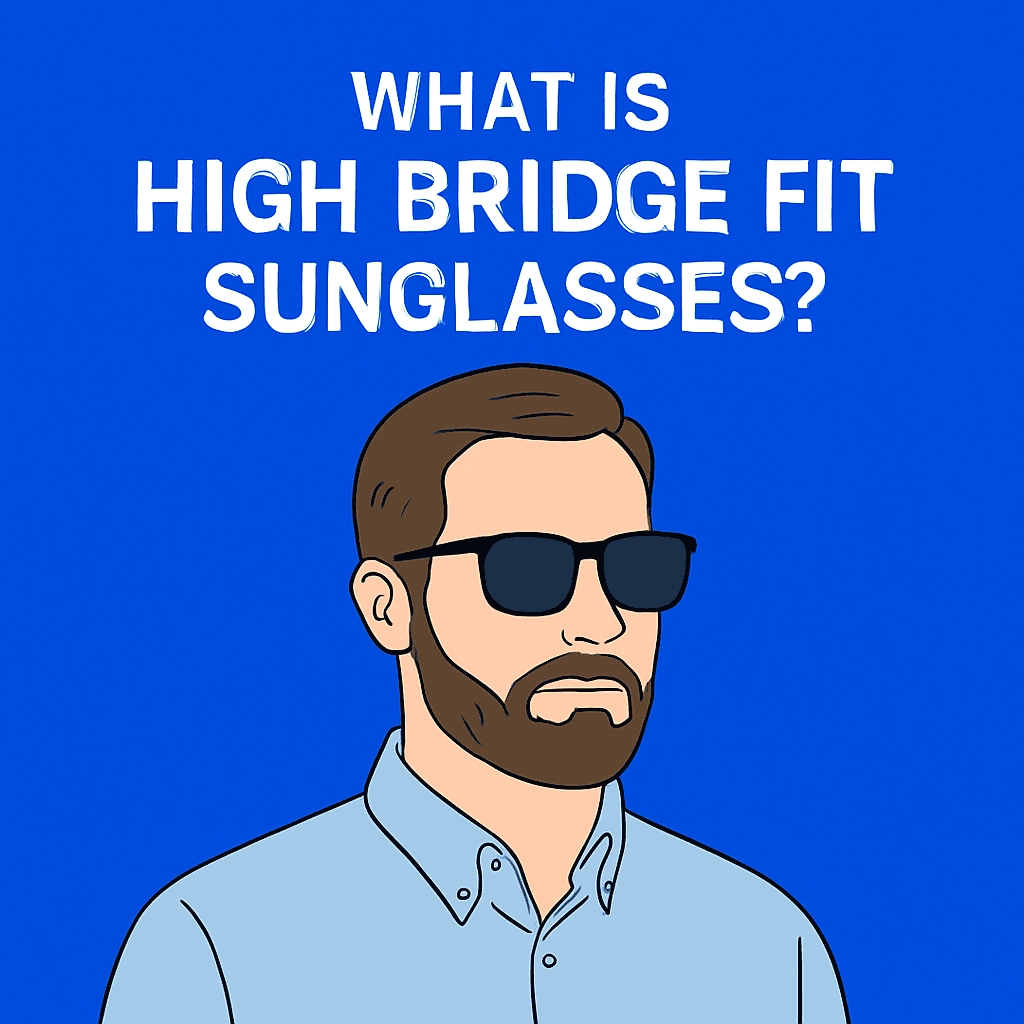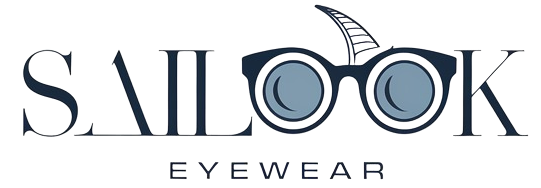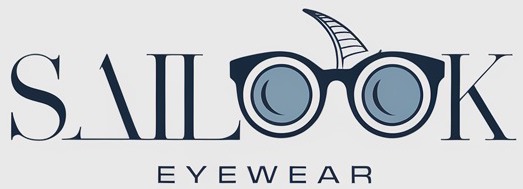High bridge fit sunglasses aren’t just another sizing category—they’re a critical design element that determines whether your frames will fit comfortably or slide down your nose every five minutes. But here’s the kicker… most people don’t even realize what bridge fit means, let alone how it affects wearability. In this article, we’re going to explain what high bridge fit sunglasses are, why they matter, and how to choose them effectively. You’ll walk away with practical insights that can help both consumers and eyewear professionals make better decisions.

1. What does “high bridge fit” mean in sunglasses?
Let’s start with the basics. A “bridge” refers to the part of the sunglasses that rests on your nose. “High bridge fit” sunglasses are designed for people whose nose bridge starts higher on the face, typically closer to or above the level of the pupils.
Ready for the good part? This design change isn’t just for style—it affects everything from lens alignment to frame stability. Traditional or “standard” bridge fits might not provide enough support for high-bridge individuals, leading to frames that feel loose or unstable.
The shape and placement of the bridge in these frames mean the weight of the sunglasses is distributed higher and more evenly, reducing sliding and discomfort. It also positions the lenses more accurately in front of the eyes.
Some brands refer to this as “Asian Fit” or “Alternative Fit,” though that terminology can vary based on region and brand philosophy.
| Bridge Fit Type | Nose Bridge Level | Typical Face Types |
|---|---|---|
| High Bridge Fit | Above pupil line | Longer noses, deep bridges |
| Low Bridge Fit | At or below pupil line | Flatter noses, shallow bridges |
| Standard Fit | Midpoint | Average nose height |
2. Why does bridge fit matter when choosing sunglasses?
Here’s where things get interesting. Most people buy sunglasses based on appearance. Yet the wrong bridge fit can ruin even the most stylish pair. Bridge fit influences comfort, visual alignment, and durability over time.
You might be wondering… why not just adjust the nose pads? Well, while adjustable nose pads help, they’re not a substitute for a properly engineered frame structure.
For example, if a person with a high nose bridge wears a low bridge fit frame, the sunglasses may sit too low on the face, affecting both aesthetics and function. It can also cause pressure points on the cheeks or temples.
Wearing the wrong bridge fit can even result in optical misalignment, which can lead to eye strain or headaches—especially in prescription sunglasses. That’s a problem worth avoiding.
| Effect | Poor Fit Outcome | Proper Fit Result |
|---|---|---|
| Lens Position | Misaligned with pupils | Aligned with pupils |
| Nose Comfort | Slippage or red marks | Even pressure |
| Style | Too low or crooked | Balanced and proportional |
3. How can you tell if you need a high bridge fit?
Determining your ideal bridge fit starts with understanding your facial anatomy. High bridge individuals often have longer noses or bridges that begin near the top of the nose, between the eyes.
But here’s the real story… it’s not just about looks—it’s about structure. Stand in front of a mirror and look at where your bridge starts in relation to your pupils. If it starts at or above them, you likely need a high bridge fit.
You may also notice common issues like sunglasses that always slide down, or lenses that touch your cheeks when you smile. These are strong indicators that your current fit isn’t right.
Try on multiple styles, and observe where the frame sits naturally without nose pads being forced into position. The goal is a natural, even fit.
| Indicator | Suggests High Bridge Fit |
|---|---|
| Nose bridge starts above pupils | Yes |
| Sunglasses slide frequently | Likely |
| Lenses sit too low | Definitely |
| Frame fits best when lifted | Yes |
4. What are the differences between high, low, and standard bridge fits?
High, low, and standard bridge fits might look similar at first glance, but their structure tells a different story.
Here’s what most people miss… the location of the bridge cut, its curvature, and how it sits on the face are all engineered for distinct face shapes.
High bridge fits tend to have deeper curves and are placed higher on the frame, helping them anchor properly on higher nose bridges. Low bridge fits typically offer a flatter bridge area, often combined with thicker or molded nose pads to compensate for shallow nose structure.
Standard bridge fits fall somewhere in the middle but often don’t work for those with extreme facial features—too high or too low.
| Bridge Fit | Placement | Best For |
|---|---|---|
| High Bridge | High on nose | Prominent nose bridge |
| Low Bridge | Lower & flatter | Flat or shallow nose bridges |
| Standard Fit | Centered | Average anatomy |
5. Who should wear high bridge fit sunglasses?
Let’s break this down clearly. High bridge fit sunglasses are great for anyone whose nose bridge starts high on the face and whose current frames tend to slip or press against the cheeks.
This often includes people of European or Middle Eastern descent, and individuals with longer noses or higher nasal bones. However, this is not strictly ethnic—it’s anatomical.
High bridge fits are especially useful in high-performance settings like sports, where stability is key. They’re also preferred by professionals who wear sunglasses for long hours and need consistent optical alignment.
It’s about more than just comfort—it’s about function and fit.
| Facial Features | Suitable Fit |
|---|---|
| High nasal bone | High Bridge Fit |
| Prominent nose length | High Bridge Fit |
| Frequent frame slippage | High Bridge Fit |
6. Are there specific brands known for offering high bridge fit sunglasses?
Yes, several top-tier brands recognize the need for inclusive fit options and offer specific models labeled as “High Bridge Fit” or “Alternative Fit.”
This is where it gets practical. Brands like Ray-Ban, Oakley, and Persol often list bridge dimensions clearly in their technical specs. Some have even developed fit-specific series tailored to different regions or face types.
Additionally, many independent brands and OEM manufacturers now offer bridge customization in bulk orders, helping B2B buyers cater to a wider demographic.
When sourcing for resale or branding, be sure to look at the bridge height (in millimeters) and how it aligns with your target customers.
| Brand | Fit Options Available | Custom Bridge Options |
|---|---|---|
| Ray-Ban | High / Standard / Low | No |
| Oakley | Alternative Fit | Limited |
| Independent OEM | Yes | Yes (MOQ dependent) |
7. How do high bridge sunglasses improve wearability?
Wearing sunglasses should feel effortless. High bridge fit frames help achieve that by aligning with your facial structure from the start.
Let’s be honest… nothing ruins a premium pair faster than discomfort. A good fit ensures the weight distribution is even and doesn’t cause stress on one part of your nose or face.
Additionally, these frames keep the lenses properly positioned in front of the eyes. This is critical for vision clarity, especially in polarized or prescription sunglasses. It also helps with ventilation, minimizing fog or sweat buildup.
The result is a frame that stays in place—even during motion—and feels like a natural part of your face.
| Advantage | Result |
|---|---|
| Better weight distribution | Increased comfort |
| Stable frame position | Reduced slippage |
| Lens alignment | Accurate vision |
8. What should eyewear brands consider when designing high bridge fits?
Creating high bridge fit frames involves more than shifting the bridge position. Brands must consider geometry, material behavior, and regional anatomy.
Here’s what smart designers do. They study facial structure data from different demographics and build bridge molds accordingly. This can mean investing in new tooling or modifying existing CNC templates.
Material plays a big role too. Acetate allows more sculpting around the nose, while TR90 or metal frames might require adjustable pad arms for precision.
Brands should also think about the retail environment—do customers know their fit? Clear labeling and education go a long way.
| Design Element | Impact |
|---|---|
| Bridge placement | Direct comfort |
| Material flexibility | Customization capability |
| Market education | Faster sell-through |
9. How does high bridge fit affect lens positioning and function?
Here’s a critical point most buyers overlook. The wrong bridge fit doesn’t just hurt—it changes how lenses function.
This is where it gets technical… If lenses sit too low or tilt forward, light hits the eye differently. That means glare reduction, polarization, and prescription accuracy can all be compromised.
High bridge fit frames prevent that by holding lenses in the correct optical path. For progressive or multifocal lenses, this can make a huge difference in clarity and usability.
For sunglass lenses, it improves UV protection by keeping the lens closer and more aligned with the eyes.
| Lens Function | Affected by Fit? | Optimal with High Bridge |
|---|---|---|
| UV Protection | Yes | Yes |
| Polarization | Yes | Yes |
| Prescription Accuracy | Yes | Yes |
10. Can high bridge fit be combined with other features like adjustable nose pads?
Absolutely. In fact, adjustable nose pads can elevate the experience even further for high bridge users.
But here’s the nuance… not all pads are equal. Silicone pads offer better grip and comfort, while metal or hard plastic ones may need replacement over time.
Some luxury brands offer modular systems where users can swap nose pad sizes or angles, making one frame suitable for multiple bridge heights.
This is particularly valuable in B2B manufacturing where a single SKU might serve a broader market if properly configured.
| Feature | Benefit |
|---|---|
| Adjustable pads | Better fit control |
| Silicone material | Increased grip |
| Modular designs | Versatility for all fits |
11. What frame materials work best for high bridge fit sunglasses?
Material choice directly impacts both comfort and manufacturing feasibility. For high bridge fit designs, materials that allow nose area shaping are preferred.
Here’s a closer look. Acetate is favored for sculpting custom-fit bridges and providing a premium feel. It holds structure well and adapts to face shape.
TR90, being lightweight and flexible, is another good option for sports and budget models. Metals like stainless steel or titanium can also work, but often need additional nose pad hardware.
In bulk production, the material must also be mold-friendly and cost-efficient.
| Material | Bridge Fit Adaptability |
|---|---|
| Acetate | Excellent |
| TR90 | Good |
| Metal | Moderate (requires pads) |
12. Are high bridge fit sunglasses gender-specific or unisex?
This question often arises in both retail and B2B discussions. The truth? Fit isn’t gendered—design is.
Let’s clear the confusion. While some men’s or women’s styles are shaped differently, the bridge fit depends solely on facial structure.
Unisex models with adjustable components are growing in popularity, especially among minimalist and performance brands. These often have neutral bridge widths and flexible pad systems.
What matters most is how the frame rests on the nose—not the gender label printed inside the temple.
| Gender Label | Fit Relevance |
|---|---|
| Men’s | Design only |
| Women’s | Design only |
| Unisex | Often most adaptable |
13. How does bridge fit impact eyewear manufacturing processes?
Designing high bridge fit frames introduces unique requirements at the factory level. It influences mold creation, CNC settings, and even QC inspection processes.
This is where manufacturing gets specific. New bridge types require fresh tooling or inserts, which adds to upfront costs. CNC programs may also need adjustment to account for the fit geometry.
When manufacturing for diverse markets, offering different bridge variants may increase SKUs, packaging labels, and sample sets.
It’s a challenge—but one that modern suppliers are increasingly equipped to handle.
| Manufacturing Impact | Detail |
|---|---|
| Mold complexity | High |
| CNC customization | Required |
| Labeling & logistics | Increased effort |
14. What are some popular high bridge fit sunglasses styles?
Style still matters. The good news is high bridge fits are available in most trending designs today.
This is where buyers get options. From oversized acetate frames to sporty wraparounds, high bridge cuts are no longer niche—they’re mainstream.
Popular styles include square frames, aviators with higher bridges, and lightweight metal rounds with adjustable nose pads. Even luxury designers are launching exclusive lines based on fit type.
The focus is finally shifting from just looks—to looks and functionality.
| Style | High Bridge Compatible? |
|---|---|
| Aviator | Yes |
| Oversized square | Yes |
| Round metal | With pads |
15. Where can B2B buyers source high bridge fit sunglasses?
High bridge fit models are increasingly available from global suppliers, especially in OEM and ODM channels.
But here’s what smart buyers do… they evaluate samples, request detailed bridge specs, and ensure product fit across multiple face types.
Trade platforms like Alibaba or Global Sources allow keyword filters for fit type, and many Chinese factories now include high bridge fit in their catalogs.
Buyers should request technical drawings and confirm dimensions before mass production. Custom mold investment may be required but pays off in customer satisfaction.
| Source | High Bridge Options |
|---|---|
| Alibaba | Yes |
| Global Sources | Yes |
| Direct OEM Factories | Yes (with drawings) |
Conclusion
Choosing the right bridge fit can make or break the eyewear experience. High bridge fit sunglasses offer practical, design-driven solutions for better comfort, visual performance, and long-term wearability. Whether you’re sourcing for retail or developing private label collections, knowing your fit options gives you a real competitive edge. The best fit isn’t just about style—it’s about structure. When the frame fits right, everything else just works.
FAQ
Q1: What is a high bridge fit in sunglasses?
A high bridge fit refers to sunglasses where the bridge sits higher on the nose, designed for individuals with a high or pronounced nose bridge.
Q2: How does high bridge fit work?
It raises the bridge placement, allowing the sunglasses to rest securely and comfortably without slipping, aligning lenses properly with the eyes.
Q3: Can I tell my bridge fit just by looking in the mirror?
Yes. If your nose bridge starts above your pupils or glasses often slide down, you likely need a high bridge fit.
Q4: Are high bridge sunglasses only for Asian or Western faces?
No. It depends on anatomical structure, not ethnicity. High bridge fit works for anyone with a taller nose bridge.
Q5: Do high bridge fit sunglasses cost more to produce?
Not usually, though factories may require different molds or setup, especially for large-scale custom orders.

